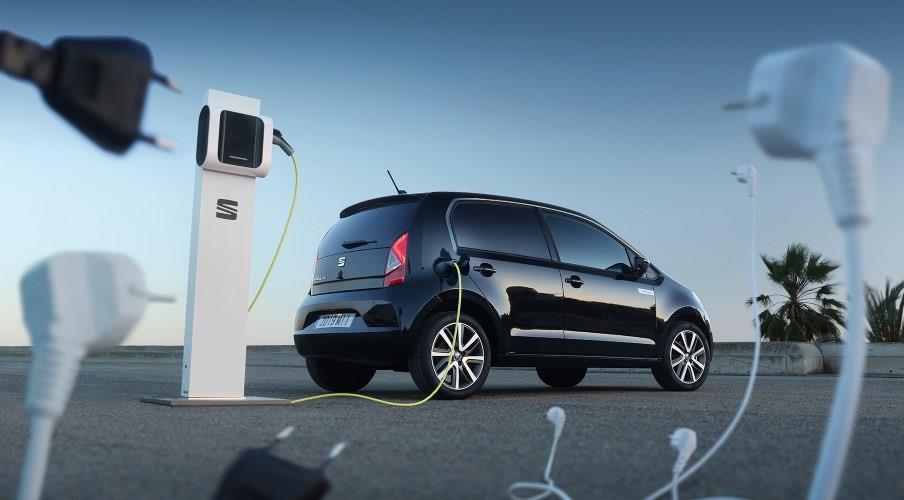
17 minute read
Delhi EV Policy A Review
Ramit Raunak Electric Mobility Enthusiast
As India is focusing on promoting the EV ecosystem to improve urban air quality and reduce the crude oil imports, on 7 th August 2020, Government of Delhi notified the Electric Vehicle policy. The policy was previously approved by the Council of Ministers, GNCTD on 23 rd December 2019 and now is notified for next three years. The goal of the policy is to establish Delhi as the EV capital of India and accelerate the pace of EV adoption across all vehicular segments with a focus on 2- wheelers, public/shared transport vehicles and goods carriers. The policy aims to achieve 25% of all new vehicle registrations to be BEV (Battery Electric Vehicle) by 2024.
Advertisement
Electric Vehicles
To achieve this ambitious target, the government has focused on providing demand incentive to all categories of vehicles. The following table list the purchase and scrapping incentives that have been allocated for the different vehicular segment. The incentives are based on various eligibility criteria mentioned in the policy document.
Apart from the fiscal benefits, the policyalso states exemption of road tax and registration cost of all EVs for the next three years.
Charging Infrastructure
In addition to the vehicular incentives, the policy also promotes setting up of charging infrastructure for both home charging and public charging stations. The policy states that building bye-laws shall be changed for all new home and workplace parking with 20 percent of all
Mode
Purchase incentive
Scrapping incentives Two Wheelers
5,000 for per KWH of battery. Maximum incentive is 30,000/ vehicle
Upto 5,000
Electric Autos
30,000 per vehicle
Electric Rickshaws and E-carts
30,000 per vehicle (available for Lead Acid batteries as well)
Good Carriers (L5N and N1)
30,000 for first 10,000 vehicles .
Upto 7,500
Four Wheelers
10,000 for per KWH of battery. Maximum incentive is 1,50,000/ vehicle for first 1000 cars
Upto 7,500
Electric Buses
Subsidy as per GNCTD with a commitment that E-buses must constitute 50% of the fleet
vehicle holding capacity/ parking required to be Electric Vehicle ready. The government shall provide a grant of 100% for the purchase of charging equipment up to Rs. 6000/- per charging point for the first 30,000 charging points. For Public Charging Stations, the government emphasizes on providing accessible public charging facilities within 3 km travel from anywhere in Delhi. Energy Operators’ (EOs) shall be invited to set up charging and battery swapping stations across Delhi and will be provided with a capital subsidy for the cost ofchargers installation expenses.
Battery Recycling
The Policy shall encourage the reuse of EV batteries that have reached the end of their life and setting up of recycling businesses in collaboration with battery Page 11 of 13 and EV manufacturers that focus on ‘urban mining’ of rare materials within the battery for re-use by battery manufacturers.
Funding Strategy
The policy obtain states three sources to fund for various incentives being offered in the policy. Pollution cess is already applicable on sale of diesel (25 paise/litre) in the NCT of Delhi, collection from which accrues to the Air Ambience Fund. 50% of the amount collected in Air Ambience Fund shall be transferred to State EV Fund monthly. Additional road tax shall be levied on diesel and petrol vehicles, especially luxury cars. The additional tax shall be based on a sliding scale with high price diesel vehicles paying the highest additional road tax and lowprice two-wheelers incurring a small addition. An appropriate Congestion Fee shall be levied on all trips originating or terminating within the NCT of Delhi and taken using cab aggregator and ride-hailing services. Any gap left after funding will be filled through allocations from the Environment Compensation Charge (ECC) already being collected in Delhi.
The Hits and Misses ofthe Policy
Delhi’s EV policy is a comprehensive policy that focuses on the objective of promoting EV adoption in NCT. The policy is aimed to boost the economy, improve the job market and reduce urban air pollution. Manufacturing stalwarts have also hailed the policy and called it a great move towards green transport. While the policy certainly is progressive in building an EV ecosystem, it does no addresses one of the key issues of Delhi’s urban mobility, i.e. congestion. Large scale adoption of passenger electric vehicles and limitless permits to E-autos can impact the ridership of public transport and increase congestion on roads of Delhi. In addition to that, the policy has a limited focus on research and development related activities along with no strategy for awareness campaigns that are essential to address the concerns of people related to EVs. In a nutshell, the policy has been able to address all the key aspects related to EV Ecosystem and can certainly pave the way for EV adoption in the national capital of India.
Author is an Electric Mobility Enthusiast. He is a recent Graduate of Master of Urban Transport from CEPT University, Ahmedabad. He is currently working on Electric bus operation and EV Market Readiness in India. Previously he worked at LEA Associates South Asia Pvt . Ltd as Assistant Engineer (Traffic and Transportation) and has B.Tech. degree from VIT University, Vellore in Civil Engineering.
Register and showcase your business at



V IRTUAL EXH IB IT ION AND SUMM IT ON RAIL INFRA AND MOBILITY BUSINESS 2020


NOV 15 –DEC 31 2020
www.urbantransportevents.com

EV Charging Infrastructure: Evolving Trends in Charging Infrastructure Planning for Electric Vehicles in India

Anshika Singh
Student, M. Plan. SPA New Delhi
Dr. Parveen Kumar
Sr. Manager WRI India
The transition towards e-mobility has become one of the major initiatives undertaken by the Govt. of India (GoI) to strengthen its effort towards the reduction of carbon emissions. With the transport sector accounting for over 40% of total oil consumption and 90% of this going solely for road transport, the Central and State Governments have adopted a slew of policies and regulations to promote the adoption of Electric Vehicles (EVs). Nevertheless, the thought of adopting an EV in India is currently blanketed by range anxiety with the lack of charging infrastructure. While most EV charging takes place at home or work, the rollout of public electric vehicle charging infrastructure (EVCI) is key to convince prospective buyers that there is no risk of them getting stranded on an empty battery. Therefore, a reliable, accessible and affordable EVCI is critical for successful transition to EVs, alongside regulations, taxation policy, incentives, and consumer education measures. With the opening of EV charging market through the declaration of ‘electricity as a service’ by the Ministry of Power, various business models have emerged with key participation from both public as well as private players. The Indian EV market, although in its nascent stage, has been evolving through the years with innovative business models that are catering to the consumer needs and is set to make its jump through the current COVID-19 pandemic.
Emerging Business EV segment Models in different
High upfront cost and lack of charging infrastructure are among the key barriers for EV adoption. An EV operated for personal use has a higher payback period than an EV used for ride-sharing, therefore, high vehicle utilization is key to reduce the Total Cost of Ownership (TCO) of EVs. The EV industry needs to convince that their product is reliable and won't leave EV owners stranded at a charging station in the middle ofnowhere for hours and hence, economic viability, convenience in re-fuelling and confidence in technology is critical for the B2C segment. Extensive EV adoption calls for new business models to develop EVCI and create demand for EVs. The emerging business models in different EV segments are:
2-Wheelers: The electric 2-W segment has seen the highest adoption by private consumers because of its close price parity with the Internal Combustion Engine (ICE) counterpart, as well as, an increased demand by aggregation and ride-hailing services for last-mile connectivity, e-commerce companies for last-mile delivery. Many start-ups have emerged out including Bounce, Vogo, YULU, Zypp that are focussed on the bike rental model, while Rapido has adopted the bike aggregation model. These services are expanding across tier-I and tier-II towns due to the economical fares/improved connectivity.
To retain and sustain demand of services during the pandemic, a major change has been introduced in their business models
with long term-rentals. Bounce, YULU and Vogo have now started offering their services with several subscription plans right from a week to 30 or 60 days apart from the usual hour-based plans. Bounce has even partnered with electric scooter maker Ather with a provision to buy Ather 450 on the app and renting it out when not in use, allowing owners to decrease their TCO via generating revenue from existing assets (Business Today, 2020). With this, bike-rental startups are seeing a quick recovery driven by fear of using public transport and have witnessed over 30% of business at preCOVID levels..
In the EVCI space, major participation is seen from start-ups to provide the muchneeded infrastructure for e2-Ws. Zypp has installed Battery Swapping Stations in Delhi NCR where the users can opt for a battery swap option and avail a swap within 3 minutes with a nominal payment of Rs 25 (YourStory, 2020) while, Ather has installed its connected charging stations across Bengaluru, named AtherGrid within a 4 km driving distance at malls, restaurants, tech parks, multiplexes and gyms with free access to all EV owners for the first 6 months.
3-Wheelers/E-rickshaw: The e-rickshaw ecosystem in India grew organically without any government support because of the favourable economies provided by shorter trip lengths and lower upfront purchase costs. Since 2010, E-rickshaws are providing last-mile connectivity services in India and operating on cheap lead-acid batteries which poses safety hazards and has been dominated by a large number of operators in the unorganized sector. The advent of cheap and safe Lithium-ion batteries with subsidies under FAME-II has accelerated the transition in the operation and technology used by E-rickshaws leading to their integration with the city's public transportation system by the public authorities. Delhi NCR has started this revolution with Metro Corporations partnering with e-rickshaw start-ups namely, Smart-E and ETO for providing first and last mile connectivity to metro users. Original Equipment Manufacturers (OEMs) are also tweaking their business plans. Kinetic Energy, the vehicle partner for Smart-E has rolled out a range of fogging and spraying EVs, and is also focusing on B2B demand by pushing cargo solutions for e-commerce and FMCG delivery as well as waste management companies.
However, a major challenge in this segment is the integration of their charging with safe and regulated charging infrastructure. Illegal charging of Erickshaws poses an economic threat to DISCOMs, which incur losses in billions in Delhi alone (Mercom India, 2019).
Hence, many collaborations are being developed recently between the OEMs and start-ups in EVCI to provide planned and regulated charging supply at affordable prices. SUN Mobility, a provider of energy infrastructure for EVs has partnered with SmartE to deploy its energy infrastructure at SmartE Park & Charge Hubs located across Delhi-NCR and is also providing its advanced, lightweight Lithium-ion batteries to improving the efficiency of the vehicle (Express Drives, 2018).
Major initiatives have also been taken in the battery swapping space which provides a less time-consuming as well as affordable solution by bringing down the initial EV cost to just half the price. Start-ups including E-Chargeup and SUN Mobility have set up their Battery Swapping Stations (BSS) across Delhi-NCR that enables battery swapping within two minutes. Furthermore, SUN Mobility has tied up with 9 OEMs and 10 fleet operators Uber, and Piaggio to makeswappable batteries usage in 3-Ws. Recently, Kinetic Green Energy has partnered with Bharat Petroleum Corporation Limited (BPCL) under which, both the companies will provide smart lithium-ion batteries and set up BSS across major cities (already implemented in Kochi and Lucknow). With this initiative, a range of e3-Ws, specially designed for facilitating swappable battery will be deployed, with support from IIT Madras.
4-Wheelers: Adoption ofelectric 4-Ws has seen a dominance of aggregators in both B2B and B2C model segment as compared to private owners because its high cost factor. Start-ups, such as Lithium Urban Technologies, and Blu-Smart have gained a successful venture into this business in major cities across India. Lithium Urban provides corporate employee transportation service on a monthly revenue and per trip-basis in 9 major cities through its EV fleet to companies with large employee bases and predictable travel schedules such as Google, McKinsey, etc, while Blu-Smart provides ride-hailing services (inter and intra city) and car-sharing for riders in Delhi NCR & Mumbai. Currently, Lithium Urban is in partnership with Tata Motors and Mahindra Electric and Blu-Smart with Mahindra Electric for procuring their EV fleet. With the ongoing pandemic, purchasing a new vehicle may not be a viable option for many. This is where such car rental subscriptions swoops in to provide a secure and convenient way of transportation. Car rental companies like Zoomcar are beginning to offer extended and flexible subscriptions from a minimum of1 month up to 36 months in cities and are expected to see a tremendous growth under such plans.
At present, the e4-Ws segment has seen major participation from multiple stakeholders in the EVCI business including DISCOMS, Public Sector Undertakings (PSUs), OEMs and other private players. A major push started with the government’s efforts through MoP’s National e-Mobility Programme under which EESL is counting on a bulk purchase model of 10,000 charging units (similar to the way it procured EVs), allowing the company to source them at significantly discounted rates and achieve economies of scale. It has planned to install 2000 charging stations in the country in FY2020-21 with 500 coming up in Delhi alone. Apart from this, TATA Power and BSES are providing public EVCI in Delhi and Mumbai. Start-ups including Lithium Urban and Blu-Smart have also entered into this business where Lithium is offering its clients with three types of charging infrastructure. For the first type, the start-up provides charging infrastructure on the company’s campus that can be used by any employee. The second type involves a tie-up with a real estate developer to set up public charging stations on their properties. The third type is the renewable charging hubs, where Lithium has set up infrastructure on real estate it owns. Vehicle manufacturer, MG Motors has entered into agreements with companies like Fortum Charge & Drive and Delta Electronics to install fast-charging stations and AC chargers in its showroom and workshops in
India as well as homes and offices of EV owners. Nevertheless, it is observed that the current EVCI market in this segment is only focussed on plug-in charging with non-existent services under the battery swapping option. A major barrier to implementing battery swapping for 4-Ws is the fact that most EVs are not designed for this method. Only select car manufacturers outside India produce EV models with swappable batteries, an example being Tesla. Unless Indian automakers start introducing e4-Ws compliant with battery swapping, fast DC charging is the only best option available currently.
E-bus: Adoption of electric buses has been done mainly by State Road Transport Undertaking (SRTUs). The current FAME-II scheme, plans to support over 7,090 buses. As per NITI Aayog recommendations, the FAME II subsidy will be provided to SRTUs only when the procurement of all-electric public buses is done under Operational Expenditure Model –wherein SRTUs buy mobility as a service on per km basis from private operators with major focus put over the quality of service rather than asset creation. Till date, the central Government has approved the procurement of 5595 e-buses for 22 states/64 cities under FAME-II with the State governments making major progress in adoption of electric public transport. Maharashtra government has commenced its first-ever intercity e-bus service in February 2020, serving the twin cities of Mumbai and Pune on a PPP model and is planning to extend operations in other parts of Maharashtra and adjoining states. With the PPP model, the electric buses procured from OEMs in both the states will be will be provided by the charging infrastructure from the OEM itself.
Emerging Partnership in Infrastructure development Charging
Charging infrastructure availability is indispensable, and governments and industry stakeholders alike are motivated to provide charging solutions to eliminate infrastructure as a barrier to EV adoption. Many state-owned and private power utility companies are now planning to enter the business of setting up EVCI to help improve their performance and adjust themselves to the muted demand for electricity, as discussed earlier. Even, OEMs have entered into strategic agreements with battery manufacturing companies/swapping companies to build charging stations. In the current sphere of circumstances, the demand aggregation model for the provision of mobility services as well as charging infrastructure is getting a big boom in the market. Innovative collaboration with key stakeholders has been adopted to maintain a balance between supply and demandside. The major demand aggregation models for charging infrastructure deployment that have been witnessed are:
Public sector-led demand aggregation: Starting from the bulk procurement model practiced by EESL of 10,000 charging units, many State governments have forayed into this business. EESL has also signed MoUs with various private and public companies including Apollo Hospitals, BSNL, and Urban Local Bodies (ULBs) in Delhi NCR, and is in discussion with other cities also. Under the MoU, EESL makes the entire upfront investment on specified services and deploys the manpower required for the operation and maintenance of the charging infrastructure. Meanwhile, the other party provides the requisite space and power connections for the charging network to EESL (Car and Bike, 2019). Delhi and Rajasthan government have encouraged the participation from DISCOMs and private players in setting up ofpublic
EVCI through Delhi’s EV policy and Rajasthan Electricity Regulatory Commission’s draft order on charging infrastructure.
DISCOMs led demand aggregation:
BSES and TATA Power have joined hands with ride-hailing services like BluSmart and Prakriti E-mobility respectively to create demand for their charging infrastructure business. BSES Rajdhani Power Ltd (BRPL) has partnered with Gensol Charge Pvt Ltd (owner of BluSmart e-cab service), and Techperspect to set up over 150 charging stations across its licensed area and is enabling its consumers to locate the nearest charging station, make advance online booking with onlinepayment options through its mobile application (Business Standard, 2019). Delhi’s other private DISCOM, Tata Powers has partnered with Tata Motors Limited to set up around 300 EV charging stations by the end of 2020-21, at the latter's dealerships, Tata Group retail outlets, and other public places.
Private Sector led: The private player spectrum has seen innovative business collaborations in both the plug-in and battery swapping charging technology. Vehicle manufactures, including Ather Energy and MG Motors India are installing public charging stations using the plug-inbased technology. Even, start-ups including Lithium Urban Technologies and BluSmart are providing charging infrastructure to their clients and public for e-4Ws.
While under battery swapping, services are currently available for only 2-Ws and 3-Ws segment, with absence of e4-W models with swappable batteries. Startups and OEMs including, SUN Mobility, E-Chargeup, Zypp and Kinetic Energy are installing BSS across Delhi NCR to cater to the demand of growing e2-Ws E-rickshaws and e3-Ws in cities. Major fuel corporations, have also forayed in this business with partnerships from charging service providers. Indian Oil Corporation, has partnered with SUN Mobility to provide battery swapping services at its fuel stations in Chandigarh while HPCL has started its battery swapping programme in Thane, Maharashtra,
In the current sphere of circumstances, rental and ride-hailing services could help Indian cities skip right over the age of private (combustion-powered) vehicle ownership to one where e-mobility services prevail. This would require the deployment of accessible, reliable and affordable charging infrastructure that resonates with the demand of private EV owners along with such services. With the demand aggregation model for the provision of mobility services as well as EVCI getting a big boom in the EV market, battery swapping is emerging as the most preferred option for e2-Ws and e3-Ws, and many start-ups have attuned their services to such demands. A recent study by Deloitte, has predicted that electric 2-Ws, 3-Ws and battery swapping segment will see immediate interest in the post-COVID era with the shift of ridership from the public transport system.










